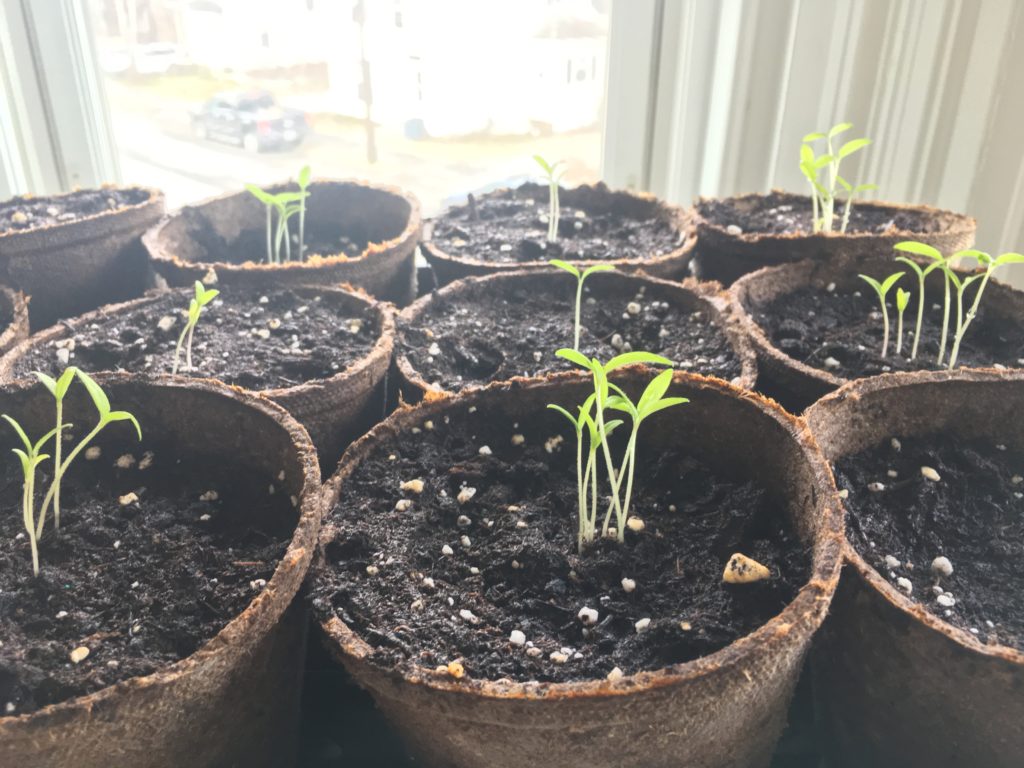

Then I snip off all the extra seedlings, leaving just one seedling in each cup. I let them sit and get sturdier for a few days. The seedlings, now in a cup, go back on the windowsill. The clear cup helps stop me from over watering the seedlings.

Often the top will dry out, but there is still plenty of water lower. I use clear cups so I can see how damp the soil is. Carefully add potting soil all around the seedling.Ĭovering much of the stem with soil lets additional roots develop (from the stem), making the future tomato plant stronger. To transplant, gently move the peat pot and seedling and place it in the cup. First, place about ½ inch of gravel in the bottom of a clear, plastic drinking cup. Many experts recommend snipping off the extra seedling in each pot at this point, but I don’t do that yet. Time to TransplantĪs soon as each seedling has two sets of leaves, I transplant the peat pots. Here’s how I keep them from dying before their time:Īs you can see, I forgot to add the gravel. I have used empty milk containers, soil plugs, seed starter trays, and several other options, but for me, the peat pot convenience factor outweighs the constant care factor. So, you have to constantly care for the seedlings – no vacations allowed until the plants are bigger!ĭespite this, I almost always use peat pots when starting my numerous tomato plants (this year only 20!). They dry out quickly, and they get soggy quickly – putting seedlings at risk of drying up or drowning. They seem to promote quick, leggy plant growth. But they are not always the best option when starting seeds. Peat pots are inexpensive, convenient, and available almost everywhere. But, if you – like me, have a talent for growing leggy seedlings, read on! Peat Pots: The Good and the Bad Hopefully when you follow this technique it works for you. I write more about it in this old post, 5 Tips for Growing Tomatoes from Seed, or this one, Starting Tomato Seeds Step-by-Step. This method absolutely works for most people, but I have never had good luck with it. If it’s not warm enough for the plant to live outside in direct sunlight, you will need a grow light. Provide a large enough pot to allow roots to grow. That way they won’t grow too fast as they stretch towards the light. Re-pot the plant and bury them deep, up to the bottom most sprouted leaf on the stem. Update: Within minutes of posting this article, several people contacted me with the “leggy seedling” fix – keep a light over the seedlings, but only about 6 inches away. Stimulation is key as movement causes the seedling to strengthen it.

Leggy tomato seedlings how to#
Luckily, I have finally figured out how to fix the problem. This trick works to prevent leggy lettuce seedlings, leggy kale seedlings, and leggy tomato seedlings Once they get leggy, its harder to help them so its good to give them a breeze or a pat right after they germinate, and to give them movement and air circulation daily. They are delicate and tend to die before they get very big. They are more apt to flop over when the leaves get big, or break when transplanting in the ground. Leggy seedlings are less likely to grow into strong, producing plants. Of course, this means I end up with tall, leggy seedlings. It seems to happen every year my tomato seedlings bolt for the sky.


 0 kommentar(er)
0 kommentar(er)
